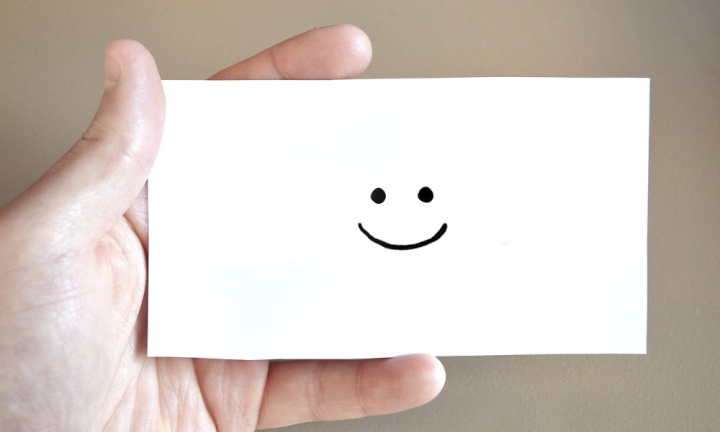How To Increase The Effectiveness Of Advertising With Emoji
Emoji have long taken an important place in informal Internet correspondence, they help make messages more lively and emotional, as well as more accurately express a mood or describe an event.
Content:
1. What is an emoji? How and when did they appear? How many emoji are there?
2. Why are emojis needed in ads? Are they really effective?
3. Where can emoji marketing be used?
4. Recommendations for using emoji in advertising and marketing
5. Conclusion. We stimulate the interest of the audience
Despite their huge popularity, the marketing function of emojis is still vague - some companies are already actively using emojis in their advertising and communication with customers, while others consider these emojis too frivolous or even primitive.
Therefore, we decided to dedicate our new article to the topic of emoji in advertising. You will learn about whether it is really worth using emoji in advertising campaigns, how to do it better and how effective they can be.
What is an emoji? How and when did they appear? How many emoji are there?
Emoji is a set of emoticons, icons and pictograms that are actively used in web content and correspondence between users. The first emoji characters were created in Japan in the late 90s of the 20th century and were immediately used by local telecom providers on their Internet platforms.
Initially, emoji were only supported by Japanese carriers (Au, NTT docomo, SoftBank Mobile), who even released separate emoji keyboards to make using these characters more convenient and accessible to users. The first set of emoji consisted of 172 icons, and already in 2000 their total number exceeded 1000.
In 2010, emoji were added to the international Unicode character encoding standard, which allowed them to be used not only in Japan, but also in other countries of the world. As of 2020, there were more than 3,300 emoji characters in the Unicode 13.0 database, divided into 10 thematic categories: emoticons, people, animals and nature, food and drink, objects, symbols, travel and places, flags, etc.

Emoji are supported by all modern mobile systems and platforms, as well as social networks and instant messengers: Telegram, WhatsApp, Skype, Discord, Facebook, Instagram, etc. Also today there are fonts that support emoji, many of which are free (Symbola).
Why are emojis needed in ads? Are they really effective?
The main benefit of emojis in advertising is that they help bring text communication between a business and its customers to life. With their help, you can easily and quickly fill a dry text with emotions, bringing it closer to live communication, and also express everything that words cannot convey.
- Automate the work of an online store or landing
- Empower through integration
- Don't spend money on programmers and integrators
- Save time by automating routine tasks
Another important feature of emoji is their versatility - a huge selection of emoticons and icons allows you to find suitable options for any communication channels, including correspondence in instant messengers, posts on Instagram or Facebook, email newsletters or push notifications.
In addition, emoji are an important factor in attracting attention to content, which is especially important for the effectiveness of marketing campaigns. They significantly increase the level of audience engagement and CTR, stimulate the growth of brand awareness, make advertising more original and creative.
As for the real performance indicators of emoji, among them it is worth noting the following data:
- Push notifications with emojis are opened 85% more often than without them, and their conversion increases by 9% (according to a study by Leanplum).
- Facebook posts with emojis get 57% more likes and 33% more comments and shares. At the same time, tweets with them were reposted and commented on 25% more actively (according to Zazzle Media).
- More than 50% of advertisers noted an increase in the effectiveness of those email campaigns that used emoji in their letters.

Where can emoji marketing be used?
- Social media. Text posts on popular social networks (Instagram, Facebook, VK) are one of the most common places to post emoji, as these sites are most often used for friendly or just informal communication. Emoji here will help to draw attention not only to posts, but also to mailing lists in private messages.
- Email newsletters. When it comes to promotional mailings, emojis are not as common as they are on social networks, as email is considered a more formal communication channel. Experts advise using emoji in mailing lists only if they are appropriate for the subject of the letter and will not cause a negative reaction from the audience.
- Structuring web content. Emoji are best suited for layout text posts on websites or social networks - they harmoniously complement and dilute solid text, making it more lively, interesting and easy to read. They can also be used to mark site headings or catalog sections, marking different categories with appropriate icons.
- Infographics and video. Emoji effectively replace many words, phrases and sentences, helping to express their meaning more concisely and intelligibly. Therefore, they are very often added to infographics - especially those that are intended for a multilingual audience. Emoji videos are no less popular, as these emoticons can not only revive what is happening on the screen, but also become an alternative to text subtitles with translation.
- Meta tags. Another good place to put emoji is in the title and description meta tags. They make websites more attractive and visible in search results, and add readability to their titles and descriptions. Moreover, emoji in meta tags are fully supported by the Google search engine.
- Branded emoji. The development of unique branded emojis is a strong marketing move that has successfully proven itself on the example of such well-known global brands as Burger King, IKEA, Mentos, etc. This way of using emoji requires some financial investment, but its effectiveness can pay off the investment many times over. Moreover, many instant messengers and social networks offer the ability to upload branded emoji, which will be available to all users of these platforms.

Recommendations for using emoji in advertising and marketing
If you want to attract attention, interest and evoke positive emotions with emoji, then we advise you to follow these recommendations:
- Emoji should be clear to the target audience and extremely unambiguous - few people want to spend time deciphering advertising puzzles. Too complex a combination of emoticons can leave your target audience indifferent or even cause her a negative reaction due to a misinterpretation.
- Insert emoji only where it is really appropriate, corresponds to the spirit of the brand and the style of the advertising campaign. For example, emojis are great for social media/messenger posts or some email newsletters, but are unlikely to be suitable for business correspondence or service messages.
- If you are determined to add emoji to your ad, then try to choose not only the most understandable, but also the most common emoji for it, which will definitely be displayed on all devices and platforms of users.
- Use specialized services for selecting emoji. For example, Emojipedia is a large-scale database and encyclopedia of modern emoji, where all modern emoticons and icons are located, and it also shows how they will be displayed on different platforms. GetEmoji performs a similar function, and the Emojisaurus service is able to turn words, phrases and sentences into emoji sets - with it you do not have to manually search for suitable emoji.
Conclusion. We stimulate the interest of the audience
A set of emoticons, icons, and pictograms called emoji has been around in Japan for over 20 years, and is now widely used on the Internet and beyond. For 2020, there were more than 3,000 emoji that are supported by all modern devices and operating systems, as well as many sites, social networks and instant messengers. They have a very wide scope and can be used in various areas of advertising and marketing - from email newsletters and infographics to search meta tags and videos.
A number of studies show that emoji stimulate audience interest in content, increase the number of opens, likes, shares and other conversion rates. The main thing is to use them wisely, in accordance with the expectations of the target audience, the specifics of your advertising and the brand as a whole.
Apix-Drive is a universal tool that will quickly streamline any workflow, freeing you from routine and possible financial losses. Try ApiX-Drive in action and see how useful it is for you personally. In the meantime, you are setting up connections between systems, think about where you are investing your free time, because now you will have much more of it.


